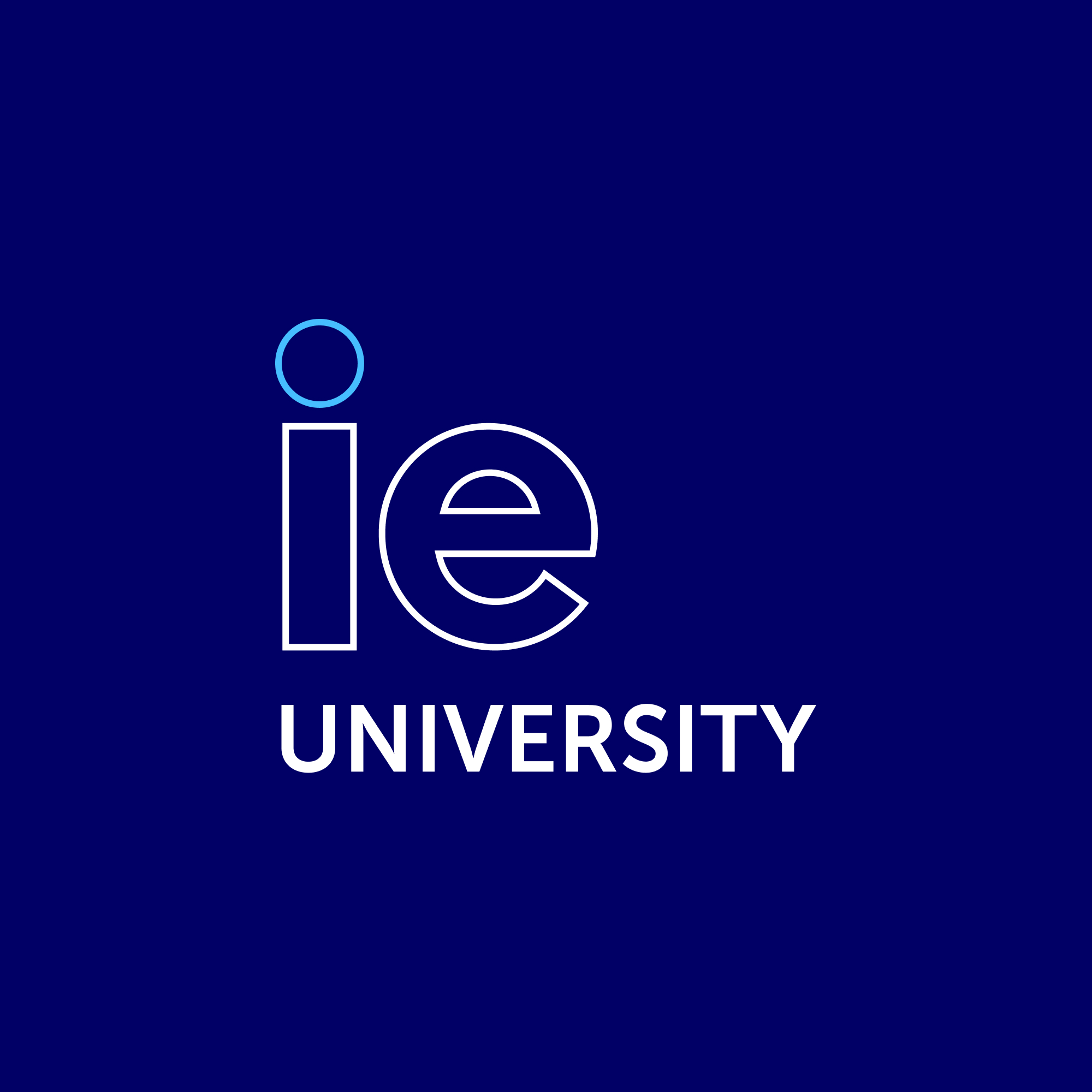The truth is, building a professional resume is essential for a successful career. Why? Because it introduces your story, your achievements and your potential impact. That means for early-career professionals, understanding how to build a resume should be top of your to-do list with due research and preparation.
To help you reach a fulfilling career, we’ve compiled this IE-approved guide to writing a CV, suited and booted with knowledge from this world-leading university.
What key information should every professional resume include?
Before we start, remember that every effective resume delivers evidence of value. Each section connects your experience to measurable results and future contribution. Remember, your resume should read as proof of competence and potential. The clearer the structure, the stronger the impression.
Contact information
Start with clear, accurate details that allow recruiters to reach you easily. Include your full name, a professional email address, phone number with country or area code, and your city and country. Add a LinkedIn profile or portfolio link if it adds context to your professional profile. Avoid personal data such as age or photo unless specifically required by your local job market.
Professional summary
Begin your resume with a short paragraph—three sentences that define who you are, what you’ve accomplished, and what you aim to achieve next. Focus on specific achievements and areas of expertise. Keep the tone confident and factual. The summary sets the tone for the document and frames the rest of your information.
Work experience
List your experience in reverse chronological order so the reader immediately sees your most recent and relevant roles. For each position, include the job title, company, location, and dates of employment. Use three to five bullet points under each role, starting with action verbs such as led, improved, increased, developed, designed, or achieved. Support each statement with quantifiable outcomes wherever possible. Clear metrics turn tasks into results and show how you have contributed to growth, innovation, or efficiency.
Education
State your degree, institution, and graduation year. If you’re using a graduate resume template, position your education section near the top—especially if your work experience is limited. Include relevant coursework, honors, or academic projects when they add value to the role you are targeting.
Skills
Organize your skills so recruiters can find them easily. Hard skills may include software, technical tools, programming languages, or certifications. Soft skills such as collaboration, communication, or leadership are best demonstrated through achievements rather than lists. Divide your skills into clear categories if necessary—for example, Technical Skills, Languages, or Certifications.
Optional sections
Complement your professional story with supporting information such as certifications, volunteer work, projects, publications, or awards. These sections are particularly helpful for students and early-career professionals who may have gained experience outside of formal employment. Each item should connect logically to the role you want.
Business resume example

How can I format my resume to grab an employer’s attention?
Recruiters typically spend only a few seconds on an initial scan, so structure and readability are crucial. Effective formatting ensures your achievements are easy to locate and interpret, both for people and Applicant Tracking Systems (ATS).
Lead with readability and structure
Choose a format that fits your career path. A reverse-chronological layout suits candidates with steady growth, while a hybrid format balances skills and experience for those changing industries or filling experience gaps. Maintain consistent margins, use clear headings, and guide the reader with white space. Fonts such as Calibri, Helvetica, or Lato offer a modern, professional appearance.
Your strongest material—your professional summary, recent achievements, and key skills—should appear within the top third of the first page. This “above the fold” area is where attention naturally falls. Studies consistently show that resumes with clear hierarchy, concise bullet points, and scannable design outperform text-heavy alternatives.
Make it ATS-friendly
Applicant Tracking Systems filter resumes long before a human sees them. Keep formatting simple so the system can read it correctly. Save your file in .docx format, avoid graphics, tables, and icons, and use straightforward section titles such as Work Experience, Education, and Skills. Reflect relevant keywords from the job description across your resume. The right phrasing increases visibility without overuse or repetition.
Format for impact
Use bold type for headings and consistent bullet symbols. Limit each job entry to key achievements and avoid long paragraphs. Parallel grammar—each bullet beginning with a strong verb—creates rhythm and clarity. For example, increased sales by 25% through targeted outreach conveys performance in a single glance.
Adapt to the role and medium
Executive resumes benefit from an elegant chronological layout with clear section breaks and ample white space. Creative or technical professionals can choose a hybrid layout that foregrounds project work and tools such as Python, Figma, or SQL. With many recruiters reviewing applications on mobile devices, ensure the document is legible on smaller screens.
Small details, strong signals
Precision communicates professionalism. Check margins, spacing, and font sizes carefully. Proofread once for grammar and again for consistency. Professional templates from recognized career services or university centers can help maintain accuracy and visual balance.
What are common mistakes to avoid on a resume?
Even qualified candidates lose opportunities because of preventable errors. A strong document avoids the distractions that obscure genuine talent.
1. Typos and grammar errors
Review every line. Use grammar tools if needed and read aloud to detect tone and rhythm. Flawless writing shows control and care.
2. Generic summaries
Avoid statements that describe intent without evidence. A professional summary should highlight results, areas of expertise, and your contribution to the organization.
3. Describing duties instead of achievements
Transform job descriptions into outcomes. Replace “responsible for client engagement” with “increased client retention by 20 percent through proactive outreach.” Results define capability.
4. Irrelevant or outdated content
Focus on roles from the last decade or experiences that relate directly to your current goals. Relevance helps recruiters see progress clearly.
5. Ignoring the job description
Tailor each application. Job descriptions reveal key terms that ATS systems and recruiters scan for. Integrate those words naturally within your experience and skills sections.
6. Inconsistent formatting
Maintain uniform spacing, punctuation, and font style. Clarity supports credibility.
7. Outdated or irrelevant skills
Highlight recent and applicable skills. Use grouped categories for clarity—for example, Technical Skills or Languages.
8. Excessive buzzwords
Words such as “detail-oriented” or “team player” add little without proof. Demonstrate these traits through measurable outcomes instead.
9. Unprofessional contact details
Use a professional email address that includes your name. Include only relevant information: full name, professional email, phone number, city, country, and LinkedIn link.
10. Dense text and overcrowded pages
Keep your resume concise. One to two pages are sufficient for most professionals. Use bullet points, bold headers, and balanced margins to make reading effortless.
Should I tailor my resume for each job application, and if so, how?
Tailoring shows preparation and genuine interest. It demonstrates that you understand what the employer needs and how your skills align with their goals.
But why does tailoring matter? In large part because Applicant Tracking Systems prioritize resumes that reflect keywords from the job description. Customization ensures your document passes the first screening and resonates with the recruiter who reads it next. Tailoring also highlights that you’ve researched the organization and can contribute meaningfully from day one
How to tailor effectively
1. Review the job description carefully and note recurring skills, tools, and responsibilities.
2. Adjust your professional summary to emphasize relevant strengths. For example, “Marketing graduate with proven results in campaign analytics and audience growth.”
3. Reorder bullet points in your work experience to feature achievements that match the role’s requirements.
4. Incorporate essential keywords naturally throughout your skills and experience sections.
5. Remove less relevant details or shorten older entries to strengthen focus.
When deep customization isn’t necessary
If applying to similar roles, maintain a master resume that covers your experience broadly. Minor adjustments—such as refining your headline, updating metrics, or emphasizing certain skills—can efficiently align your application without rewriting the entire document.
Even small adaptations convey professionalism and intent, two qualities recruiters consistently reward.
How long should my resume be, and what layout is most effective?
How long should it be?
The ideal length depends on your experience. Career experts agree that most professionals succeed with one to two pages.
One page: Suitable for students, recent graduates, or early-career professionals with fewer than ten years of experience.
Two pages: Appropriate for those with over ten years of relevant experience, leadership roles, or multiple significant achievements.
Three pages: Reserved for academic, research, or government CVs where extended detail is expected.
The goal is clarity, not word count. Every line should earn its place by demonstrating value or expertise.
What layout is most effective?
A strong layout reflects order and logic.
– Use a reverse-chronological format if your career shows consistent growth.
– Opt for a hybrid or functional layout when shifting industries or combining diverse experiences.
– Keep font size between 10 and 12 points with margins of 0.5–1 inch for readability on screen and print.
– Place your most important information—contact details, summary, and top results—on the first page.
– Employ bullet points and concise phrasing to highlight achievements.
– Avoid decorative visuals that may confuse both readers and ATS scanners.
Balance white space carefully. A readable two-page resume is more effective than a crowded single page. Thoughtful design supports storytelling by guiding the reader’s attention to your strongest evidence.
How to build a resume with IE University?
We understand the need to gain top employment when you graduate. That’s why we’re full of resume tips for students that are relevant for industry experts. From your first year at IE University, the Talent & Careers team provides tailored support: you’ll find weekly workshops on CV optimization, interview preparation and LinkedIn profile refinement. You’ll also have access to one-on-one advising to help you refine your professional brand and connect your resume to your career path. These resources help turn your resume into more than a list of roles—they make it evidence of your ambition and readiness for the next step.
Whether you’re adapting a graduate resume template or reviewing business resume examples for inspiration, the fundamentals remain constant: accuracy, consistency and proof of impact. Thoughtful structure, measured language and verified results demonstrate that you understand how to communicate value.
In any market—MENA or beyond—the candidates who succeed are those who combine preparation with authenticity. With IE University’s workshops and coaching you get both. Approach your resume as evidence of both.
What to do next?
If you’ve read this far, you’re already thinking about how to set your career up for success. If that includes studying a master’s degree at IE University, here’s how you can move forward in four simple steps:
1. Explore your options
From data science to finance, marketing, business and more, find your program.
2. Begin your application
Create your online profile, upload your résumé, transcripts, and a short personal statement. Applications are open year-round, but we recommend starting a few months before your preferred intake.
3. Take your assessment
Show us who you are through your admissions test and a brief online assessment with video and written answers. This will highlight your strengths, communication, and motivation.
4. Meet your Admissions Manager
If shortlisted, you’ll have a personal interview—online or in Madrid—to discuss your goals. You’ll receive your decision within two weeks, so you can plan your next step with clarity and peace of mind.
Discover master’s degrees at IE University
Boost your career potential with a world-leading qualification.

Benjamin is the editor of Uncover IE. His writing is featured in the LAMDA Verse and Prose Anthology Vol. 19, The Primer and Moonflake Press. Benjamin provided translation for “FalseStuff: La Muerte de las Musas”, winner of Best Theatre Show at the Max Awards 2024.
Benjamin was shortlisted for the Bristol Old Vic Open Sessions 2016 and the Alpine Fellowship Writing Prize 2023.






